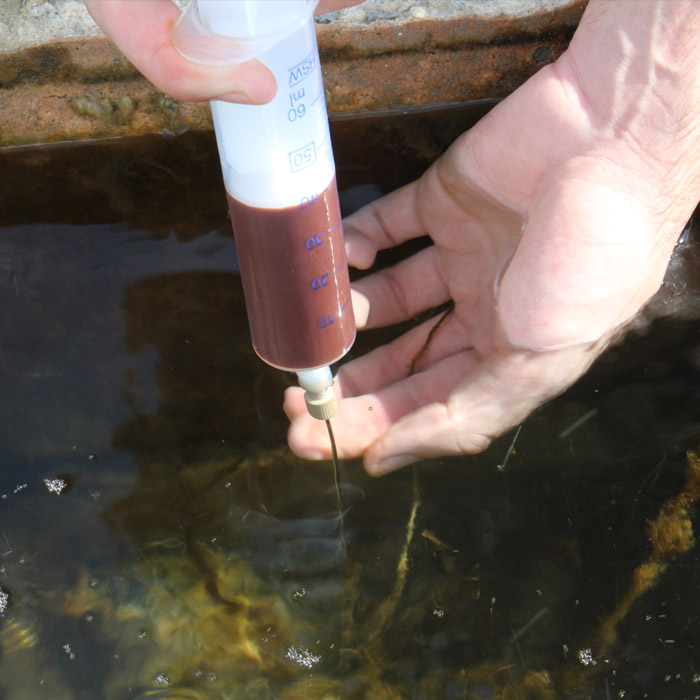
Lead PI: Dennis Hanisak
Harmful Algal Blooms can deplete oxygen in the surrounding water and deposit organic carbon into sediments. This often causes bacteria to produce a toxic compound called sulfide, which is well-known for it’s “rotten egg” smell. Sulfide production within sediments can make it difficult for seagrass to survive or recolonize impacted areas. This project aims to determine if the addition of iron into sulfide rich sediments can help to mitigate its toxic effects and make the substrate more suitable to seagrass growth and restoration.
For more information:
Geochemistry
Geochemistry and Geological Sensing Lab Blog
Marine Botany
